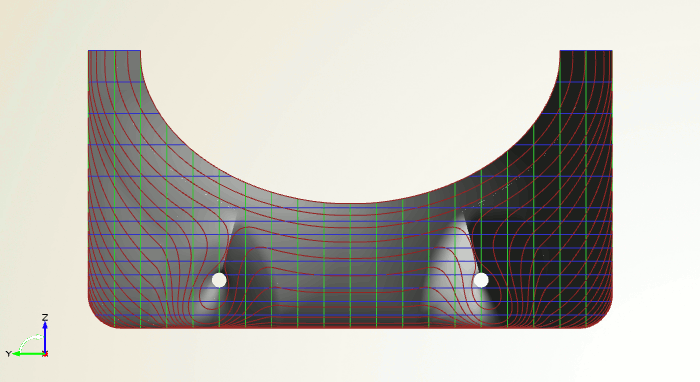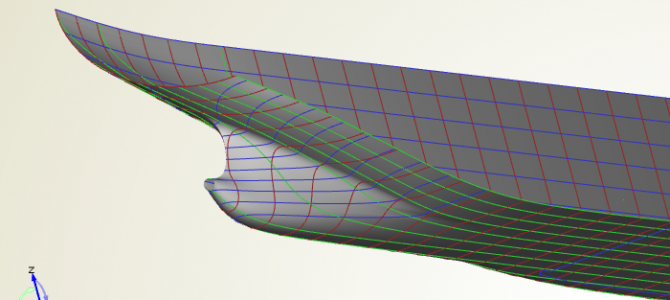In one of our recent projects a colleague created a fantastic surface model of a twin skeg ship hull. As a special request, the customer wanted to vary the twin skeg in order to conduct studies. After putting together some rough ideas, he created this great model step by step in just a couple of days in CAESES®. Here is a total view of the hull:

Ship hull shown from the side
Typically, one would model only half the vessel in a symmetric case. The following picture shows this part at the end of the vessel (aft body):

Symmetric aft body part
The following animation shows a variation of 2 parameters:
- Y-position of the shaft
- Angle of the skeg
Yes, you are right, only 2 parameters! This is really the fun part of CAESES®!

Sure, the geometry model contains similar parameters for additional control of the hull characteristics.
Interested in trying out CAESES® for your application? Then download and install our free version today! It is fully free for commercial work, and you can directly start setting up your own intelligent model 🙂
Free Download


What was the efficiency of two skeg /propeller and one skeg/propeller ?
John,
There is no simple answer to your question. In case of draught restrictions one might simply not be able to generate the required thrust with a single propeller. Another reason for having two propellers is safety. If one engine/drive fails, the other is still available to bring the ship into port. For passenger ships of a certain size this is mandatory, but for tankers it is also advantageous to avoid accidents/grounding in case of an engine failure.
Cheers
Claus
Have you looked at half tunnels between the tow propeller, with the out side of the propellers exposed to pull in the water behind the ship transom